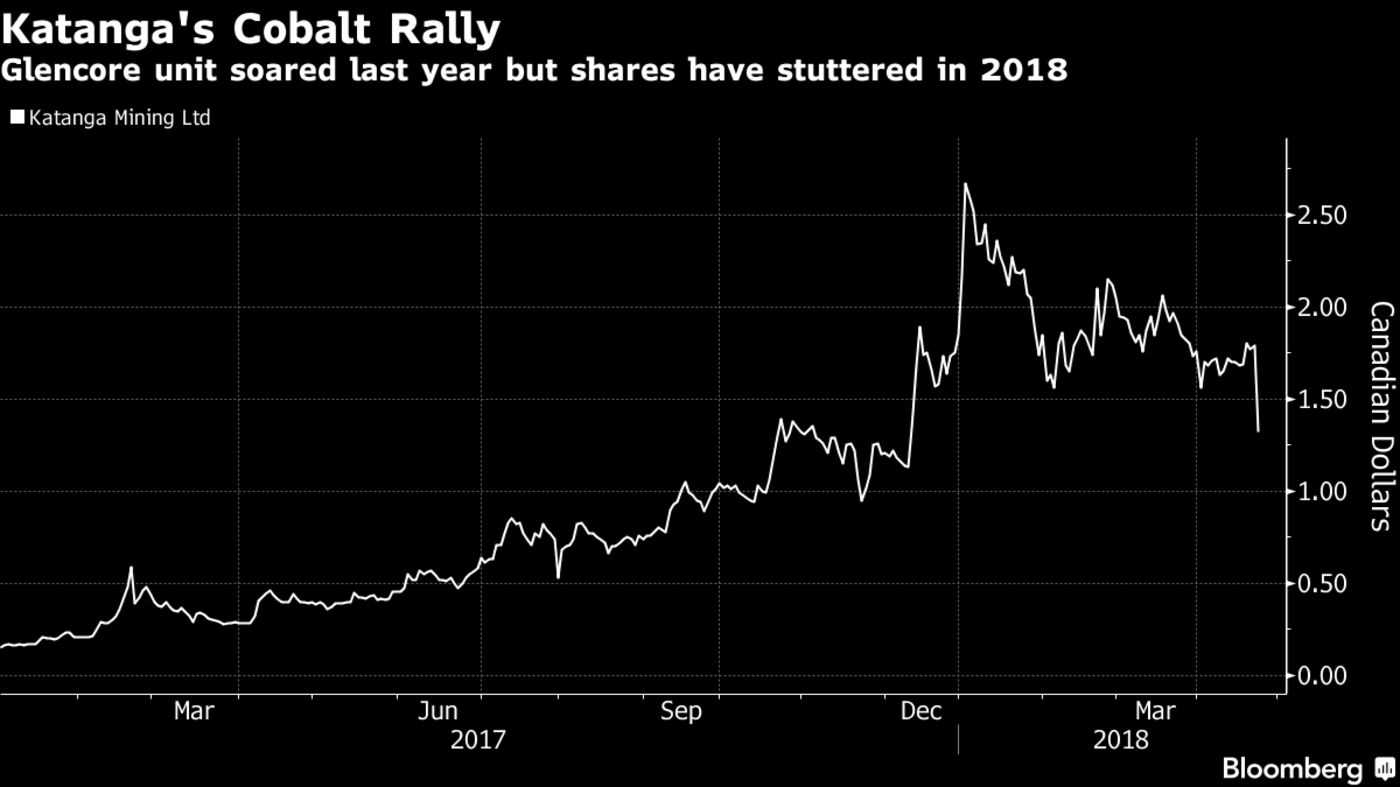Categories:
Energy
/
General Market Commentary
Topics:
General Energy
/
General Market Commentary
Glencore's Prize Cobalt Miner Is Bogged Down Deeper in Congo
Katanga Mining Ltd. will soon be the world’s top cobalt miner, churning out thousands of tons of metal and billions of dollars in revenue for Glencore Plc. It’s also turning into a major thorn in the commodity giant’s side.
Katanga is controlled by Glencore but trades in Toronto, making it one of few options for equity investors seeking exposure to the coveted battery ingredient. Its shares surged more than 1,200 percent in 2017 as the company moved to restart production in the Democratic Republic of Congo and boost cobalt output -- just as ballooning projections for electric-vehicle sales turned the metal into one of the world’s hottest commodities.
Yet instead of enjoying the boom, Katanga is mired in difficulties ranging from the prospect of higher taxes to a mounting legal battle with its Congolese partner, Gecamines. The state-owned miner has started court proceedings to dissolve the local operating unit, Kamoto Copper Co. in which it holds a 25 percent stake, after Katanga failed to reduce billions of dollars of inter-company debt that has limited Gecamines’ share of profits.
Katanga tumbled as much as 30 percent in Toronto Monday morning, the biggest intraday decline since July, after the company disclosed the Gecamines move on Sunday.
Katanga also faces continued scrutiny over its relationship with sanctioned Israeli billionaire Dan Gertler and an ongoing probe by Canadian regulatory authorities, both of which remain unresolved, Katanga said in its annual report this month.
“Katanga should be one of the best assets in the world," said Ben Davis, an analyst at Liberum Capital Ltd. in London. "Instead, it has been a perennial disappointment for Glencore and the situation looks like it is set to continue.”
Glencore and Katanga declined to comment. Gecamines didn’t immediately respond Monday.
Katanga boasts one of Congo’s biggest reserves of copper and cobalt but it has underperformed for decades. In 2015, Glencore suspended operations to address the problems and upgrade the facilities. Production restarted in December and the mine is scheduled to hit 300,000 metric tons of copper next year, when it will account for about a fifth of Glencore’s global production.

That, plus a projected 34,000 tons a year of cobalt, make Katanga central to Glencore’s strategy. The legal and regulatory challenges are putting that strategy at risk and leave Glencore’s assets in a vulnerable position, said Elisabeth Caesens, a director at Brussels-based Resource Matters, who has followed Katanga since 2008.